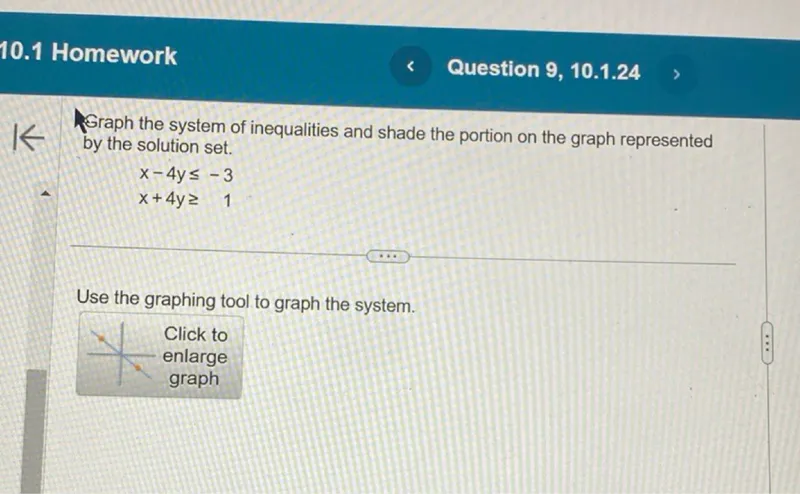Questions: Graph the system of inequalities and shade the portion on the graph represented by the solution set. x-4y ≤ -3 x+4y ≥

Transcript text: Graph the system of inequalities and shade the portion on the graph represented by the solution set.
\[
\begin{array}{lr}
x-4 y \leq & -3 \\
x+4 y \geq
\end{array}
\]





